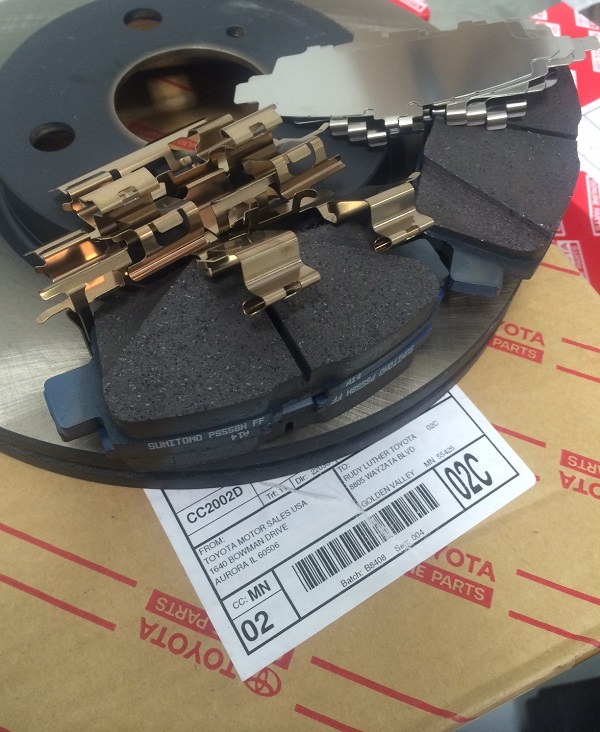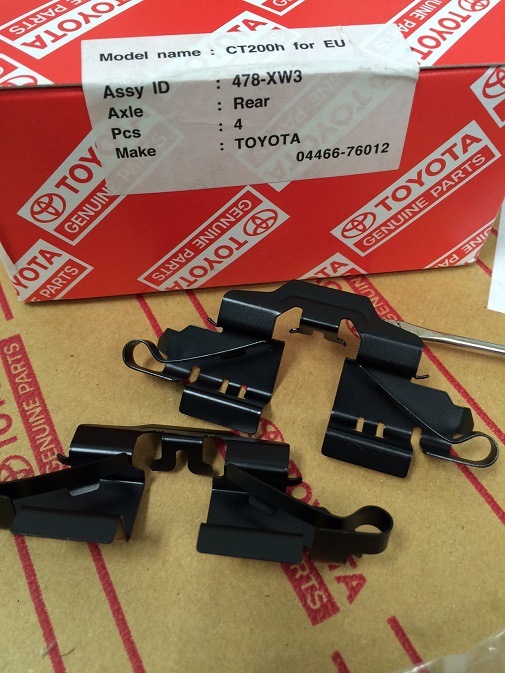Replacing your Toyota or Lexus’s brakes is the most common large expense an owner encounters with any given vehicle, but most owners aren’t familiar with what replacement includes. This blog is about helping an owner understand the process and terminology of brake replacement here at CARspec and general terms used when discussing Toyota and Lexus brake repair.
Above are all of the components to be replaced on a 2006 Scion xA: brake pads, the pad shims, the fitment kit and the brake rotors. A breakdown of terms:
Brake pads: the metal-backed, friction material lined pieces that are forced against the brake rotor when the brakes are applied. The friction material of the brake pad turns the rotating, kinetic energy of the spinning brake rotor into heat.
Brake rotor: the spinning disc of metal that turns with the wheel. The brake caliper grabs this disc when the brakes are applied via the brake pads.
Brake pad shims: metal (sometimes Teflon-coated) thin pieces of metal that fit onto the back of the pads to minimize brake noise.
Brake fitment kit: the thin metal spring-like brackets that help secure the pads into the caliper while still allowing for pad movement when the brakes are applied.
When a guest is told their brakes have X% or Y millimeters of brakes left this refers to the remaining depth of the brake pad friction material. The material is sacrificial, wearing off slowly over time, eventually requiring replacement once the material reaches a critical low point. It is important to replace the pads before they wear through the friction material and into the metal back of the pad – metal on metal contact quickly destroys rotors that may have been serviceable.
CARspec follows Toyota and Lexus’s recommended repair procedure for brake replacement, recommending that any rusty or worn component be replaced (in MN meaning the pads, shims, and fitment kits) to ensure proper future operation, and either resurfacing of the brake rotor or replacement of the rotor, depending on remaining thickness or rust. A resurfaced/new rotor is crucial to ensuring the life of the new pad – any irregularities left on an old rotor can lead to noise or abnormal brake behavior, ruining your otherwise new brakes. The same goes for the fitment and shim kits – pads sticking in the fit kit and shims rusting apart leads to headaches that could have been avoided. The calipers are also checked and grease (as appropriate) during the service.
We want to caution against just replacing the brake pads – while a cheaper option, the end result is often times less reliable and leads to more issues down the road than the owner came in with.





